Agave isthmensis, also known as Dwarf Butterfly Agave, is a petite succulent native to southern Mexico. It can be found growing wild in the Mexican states of Oaxaca and Chiapas.
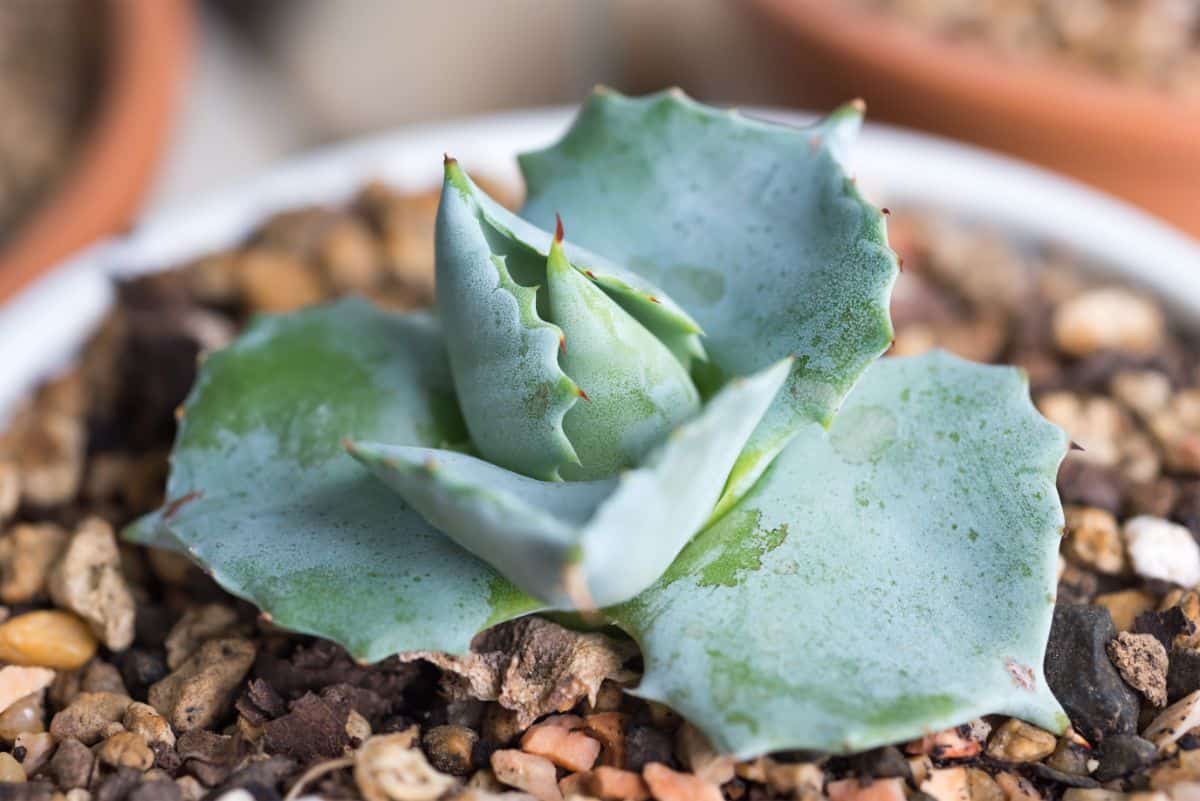
Similar to other species of Agave, Dwarf Butterfly Agave is a slow-growing succulent that will thrive with a bit of neglect. It’s an easy to care for succulent, no matter how much experience you may have with succulents.
However, this species of Agave tends to stay on the smaller side, making it an ideal succulent for Agave lovers with limited space. They grow well indoors as well as out, so long as the climate is appropriate.
Agave are mildly toxic to both cats and dogs, so if you live with furry friends, it’s best to keep your succulents out of their reach. Though the resulting illness won’t be fatal, your pet could become quite ill if they consume this succulent.
Jump to:
Agave isthmensis Appearance
| Name: | Agave isthmensis |
| Soil: | Well-draining soil |
| Blooming: | Mid summer to early fall |
| Light: | Bright light |
| Water: | When the soil is completely dry |
| Propagation: | Offsets and seeds |
The Dwarf Butterfly Agave is a small, rosette-shaped succulent that typically measures about 12 inches in diameter at maturity. These plants are generally about the same in height as they are in diameter.
The leaves of Agave isthmensis are ovate in shape. They are about 5 inches in length and around 3 inches wide. The leaves are said to have an almost gritty texture to them. The leaf margins feature dark reddish-brown teeth with a terminal spine.
The Dwarf Butterfly Agave is a powdery, bluish-gray color. However, there are two well-known cultivars that differ slightly in color from the original variety.
When in bloom, Agave isthmensis produces a tall stalk from the center of the plant that can reach up to 7 feet in height. Atop the stalk are short branches covered in vibrant yellow flowers.
However, as beautiful as the flowers may be, blooming is not an entirely happy event. Agave are monocarpic plants, which means that they will die after flowering. It can take many years before an Agave blooms, so you likely won’t need to plan on replacing your Dwarf Butterfly Agave any time soon.
Cultivars
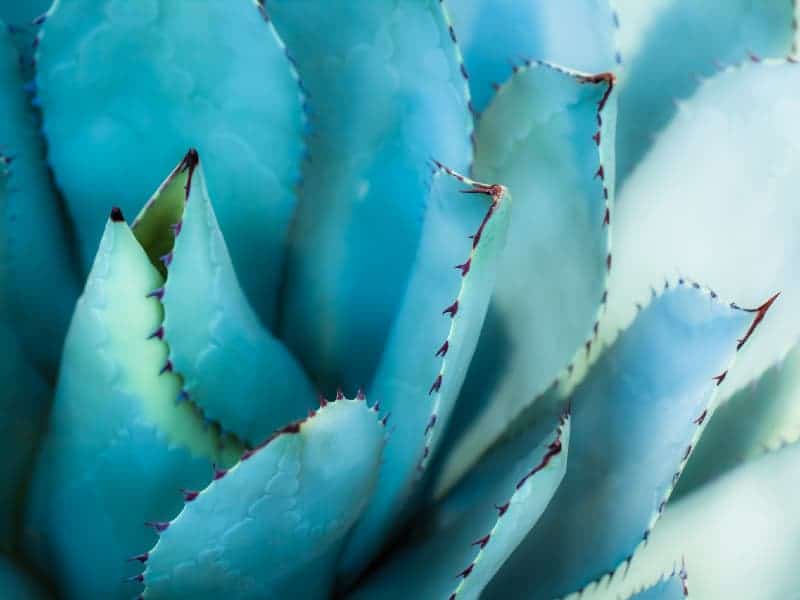
Buy it from:
As mentioned earlier, there are two known cultivars of Agave isthmensis. These varieties are not as popular as the original variety, which can make them more difficult to find. These cultivars have a much more eye-catching appearance, which makes them popular among succulent collectors.
Agave isthmensis ‘Ohi Raijin Shiro Nakafu’
Also known as Variegated Dwarf Butterfly Agave or Agave isthmensis ‘Mediopicta Alba’, this variegated form is quite rare and highly sought after by Agave lovers. Ohi Raijin Shiro Nakafu is smaller than the original variety, typically reaching only about 4 inches in height and diameter.
The leaves of the Variegated Dwarf Butterfly Agave are the same powdery grayish-blue as the original, but with thick stripes of creamy white throughout. The leaves feature the same reddish-brown teeth along the leaf margins, though the teeth may not be as prominent.
Another unique feature of this plant is that it produces pups, or offsets, from the leaf axils rather than on underground runners like other Agave.
Agave isthmensis ‘Rum Runner’
Rum Runner is a unique cultivar in that it resembles the variegated form but rather than the creamy white variegation, the stripes are a vibrant, golden-yellow. The edges of the leaves are the same grayish-blue as the original.
Again, this variety has reddish-brown teeth along the leaf margins as well as a terminal spine of the same color. The leaves are also the same ovate shape and nearly the same size.
Rum Runner typically reaches about 10 inches in both height and diameter at maturity. Offsets are produced in dense clumps around the base of the plant.
Caring for Agave isthmensis
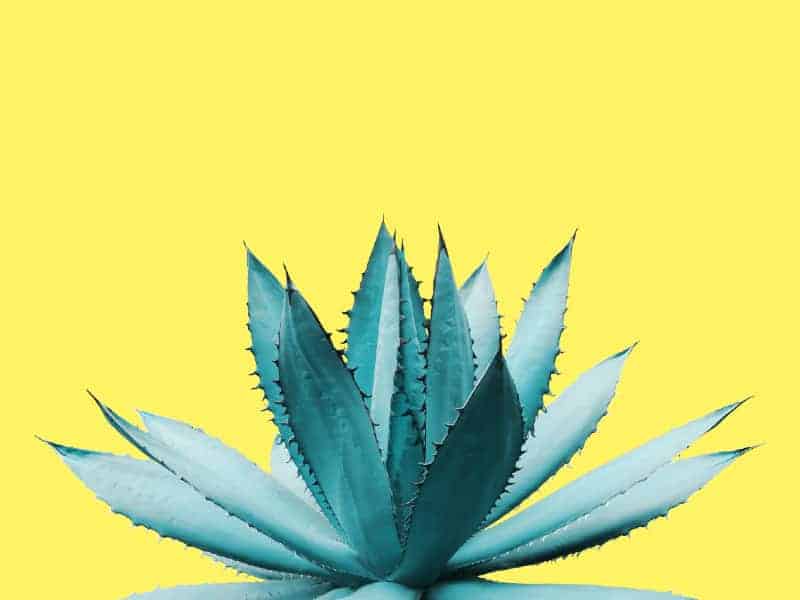
When caring for Agave isthmensis, it’s important to keep the plant’s natural habitat in mind. In the wild, this plant grows in hot, dry areas of southern Mexico on rocky coasts and cliffsides.
This is not a plant that will thrive when given a lot of attention, so be sure to show your Agave a more hands-off type of affection. Remember, a little neglect is okay when it comes to succulents.
Light
When grown indoors, Agave isthmensis prefer a bright window. A south, east, or west-facing is ideal. These plants need a bright, sunny window in order to thrive, otherwise, they may become etiolated.
No products found.
If an Agave does not receive adequate light, it will begin to stretch out in search of better light. Though etiolation is not harmful, most succulent lovers find it unattractive. However, an etiolated plant cannot be repaired, so it’s best to prevent it from becoming etiolated in the first place.
If your indoor space doesn’t provide enough light for your Agave isthmensis, plan on purchasing a grow light. A full-spectrum grow light will allow you to keep your succulent happy in even the darkest home or office.
If you live in a climate that rarely sees freezing temperatures, you may also be able to grow Agave isthmensis outdoors. When kept outside, these plants do best with full sun to partial shade.
In particularly hot climates, these plants will do best if they have a bit of shade during the hottest part of the afternoon. Otherwise, they will likely do fine in full sun.
When moving your Agave outdoors, it’s important to increase the amount of light slowly over a period of several weeks. Too much direct sun on an unacclimated plant will certainly result in sunburn.
If you notice patches of discoloration, ranging from light brown to black, your Agave has likely been sunburned and will need to be moved immediately.
Like etiolation, a little sunburn won’t harm your plant, but the damage is irreparable. You can always trim away the damaged leaves or simply accept your succulent’s new appearance.
If an Agave is left in an area with too much direct sunlight for a prolonged period of time, it may not be able to survive. For this reason, if you notice any areas getting burned, you should move your plant to a shadier area as soon as possible.
Water
Agave isthmensis is no different from any other succulent in that it prefers to be watered deeply, but not frequently. Ideally, it should be watered until the excess pours from the drainage hole in the bottom of the pot and then allowed to completely dry out before watering again.
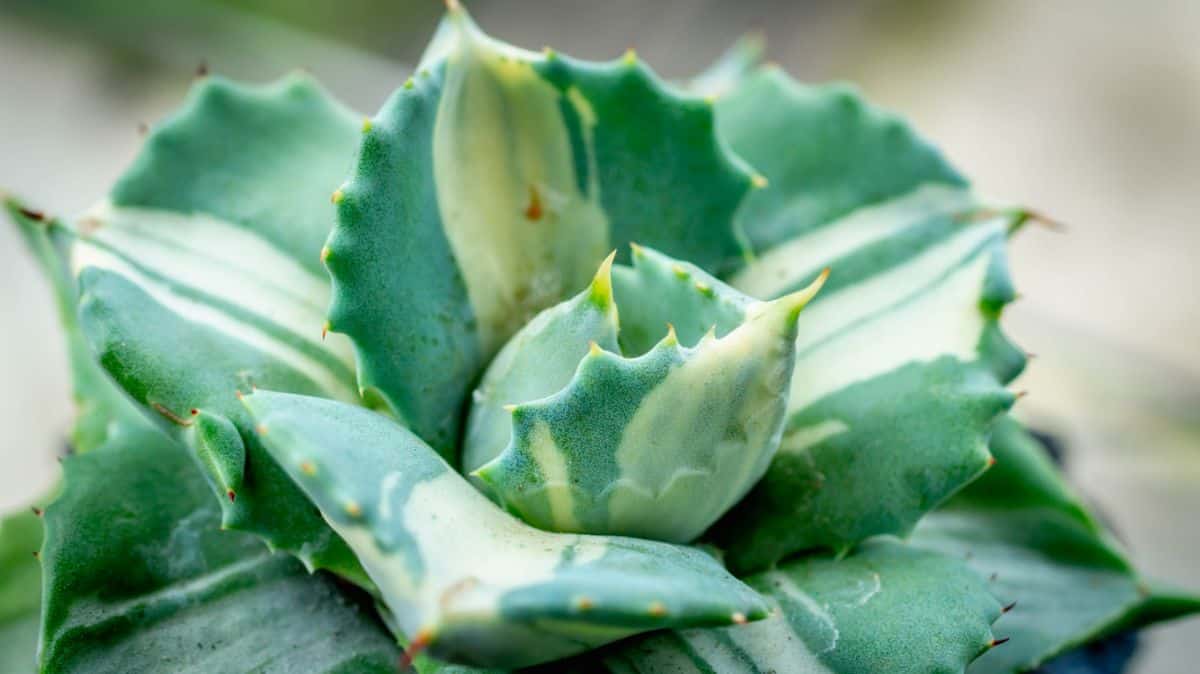
These plants tend to be quite tolerant of drought, but they will not survive frequent overwatering. If you’re going to make a mistake, it’s best to underwater a bit rather than overwater.
Overwatering puts your Agave at risk of developing root rot, which can be fatal if not caught in the early stages. One of the greatest tragedies of root rot is that it’s rarely discovered until it’s too late.
To prevent accidental overwatering, it’s crucial that you check the soil each and every time you water. By inserting a finger or soil moisture meter into the soil near your Agave, you’ll be able to determine whether the soil is still moist or dry and ready to be watered.
If you grow your Agave isthmensis outdoors, you’ll also need to adjust your watering schedule according to the weather forecast. Humid or cool weather will mean less evaporation and less frequent watering while hot and dry weather will mean you need to water your succulents more often.
Temperature
When grown indoors, the temperature is rarely a concern for any Agave. Most people keep their indoor spaces at a consistent, reasonable temperature. However, you may still want to protect your succulents from sudden changes in temperature or drafty areas.
Outdoor Dwarf Butterfly Agaves will be exposed to a wide range of temperatures, but as long as temperatures don’t frequently drop below freezing, it should be fine. These are not freeze-tolerant plants, but they can survive a light frost as long as their soil is relatively dry.
Heat is rarely a concern to Agave, so you won’t need to worry about your succulent during the summer. However, heat will increase your plant’s water needs and may make it more susceptible to sun damage, so if you live in an area that gets extremely hot you may want to grow your Agave in partial shade rather than full sun.
Soil
As with any Agave, A. isthmensis prefers to be planted in well-draining soil comprised of large particles such as coarse sand, perlite, gravel, and bark. These materials encourage fast drainage and adequate airflow to the roots.
When shopping for soil, it’s best to avoid mixes containing large amounts of clay, peat moss, or coconut coir as they will retain far too much water for your Agave. Instead, look for a commercial soil mix formulated for cacti and succulents. If you can’t find your ideal soil mix, you can also make your own.
Agave isthmensis grow quite slow, so you may find yourself worrying about the nutrient content of your plant’s soil. Plants that need frequent repotting rarely have to worry about this as they gain new nutrition when the soil is replaced during repotting.
Since this plant doesn’t grow very quickly, you won’t need to repot that often. Agave do well when occasionally given small amounts of succulent fertilizer. Fertilizing can help plants establish themselves a bit quicker, especially if planted outdoors.
However, fertilizing is not a necessary step and may actually encourage your Agave to flower. In most plants, that may be fine but for an Agave, that could mean an early death.
Container
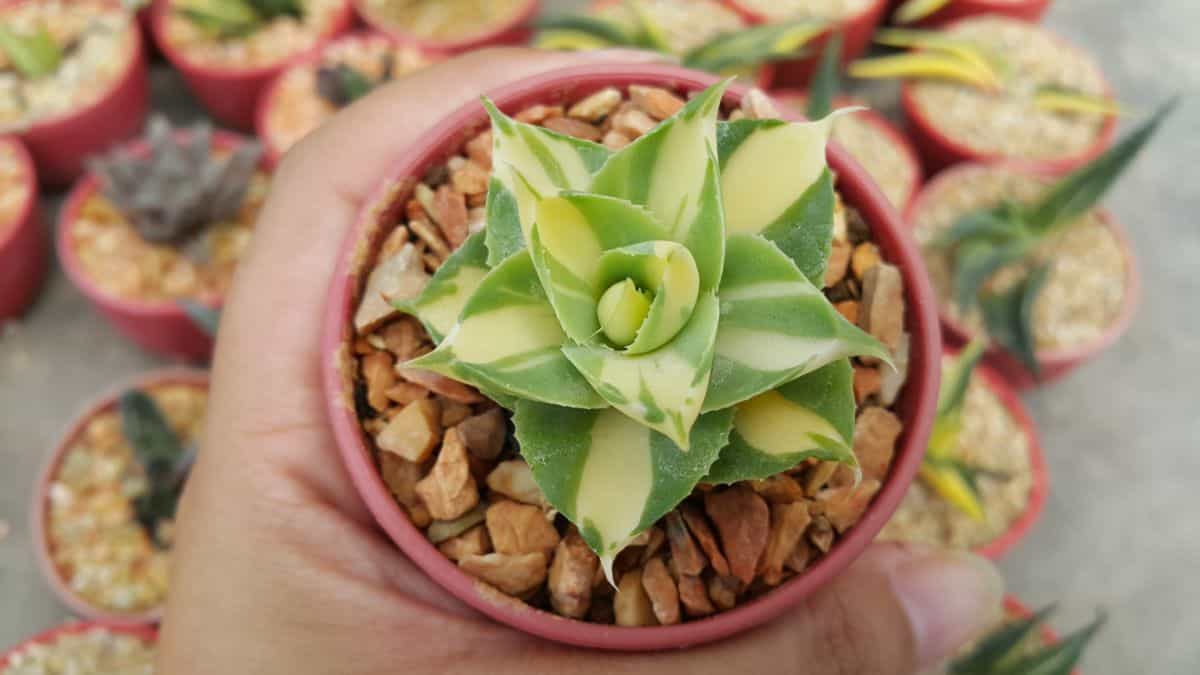
Dwarf Butterfly Agaves are highly adaptable plants that can tolerate a range of growing conditions, so they aren’t typically too picky about what kind of container they prefer, so long as it provides proper drainage.
When watering your A. isthmensis, you want the excess to be able to drain away, rather than sit at the bottom of the container. If the water is allowed to stay, it could put your succulent at risk of developing root rot.
If your container does not have a drainage hole, you’ll need to find one that does. If you’re a handy gardener, you can also drill a hole or two into the bottom of your container.
As an additional measure to prevent overly moist soil, it’s important that you do not line the bottom of the pot with rocks. Though commonly recommended as a method to encourage better drainage, doing so actually lifts the water table and can expose your plants’ roots to far more moisture than they would experience without the rocks.
As long as you choose a container with drainage holes and well-draining soil, you don’t need to do anything extra to encourage better drainage.
The material the pot is made of is a personal choice, so choose based on your own preferences. Terra cotta absorbs water and can be helpful in preventing overwatering, but it does not come in the same range of colors and patterns as plastic and glazed ceramic pots.
Propagating Agave isthmensis
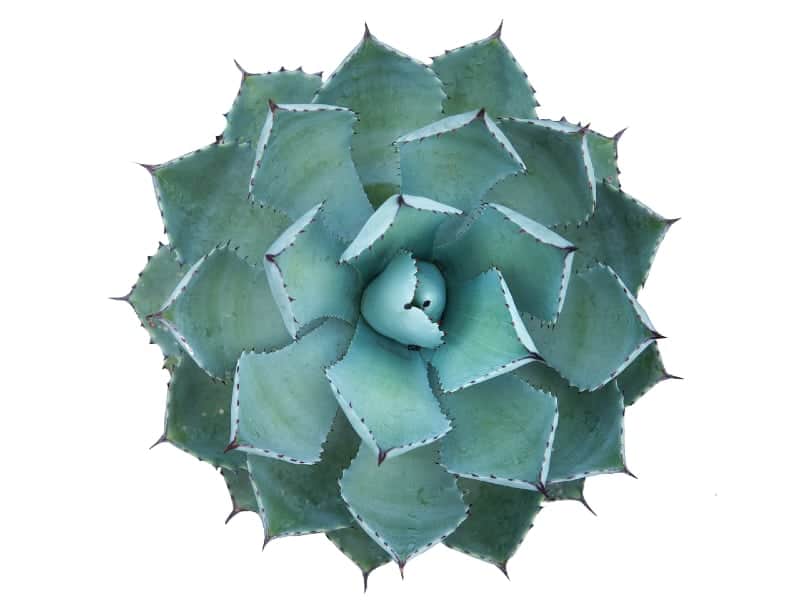
If you’re looking for a propagation challenge, Agave isthmensis is the wrong plant. This succulent is incredibly easy to propagate, whether you’re just getting into succulents or are an experienced gardener.
Propagation is a great way to expand your garden or share your love of succulents with friends and family. You can also create interesting projects such as centerpieces and fairy gardens.
There are two main methods of Agave propagation. The first, offset separation, is the most popular method due to the time involved in producing seeds. Since Dwarf Butterfly Agaves take years to bloom, you’d have to be an especially patient gardener to wait for seeds.
Fortunately, happy Agave produce offsets regularly and do nearly all of the work for you. All you need to do is carefully remove them from the parent plant.
See Related Topic: Copiapoa Cinerea
Offsets
Offsets are tiny plants that appear around the base of your Agave. The exception to this is the Variegated Dwarf Butterfly Agave as the offsets appear around the leaf axils instead. These tiny Agave can be easily separated and planted in their own containers.
To collect A. isthmensis offsets, gently remove them from the soil using your fingers. You may also brush away some soil to expose the roots if you’d prefer to cut them away with a sharp, clean knife.
If you’re collecting variegated offsets, you’ll need to gently cut them away from the mother plant using a knife or pair of shears or scissors. These offsets will need to be treated more like cuttings as they will not have the established root systems of a normal pup.
After collecting the offsets, you’ll need to place them in a safe space away from direct sunlight for a few days to allow the wounds to callous. Otherwise, the wounds are an open doorway for fungus and bacteria to infect your precious plants.
Once the offsets’ wounds have calloused, they’re ready to be planted in their own containers. As these are just smaller versions of a mature plant, they can be treated as such in terms of watering and light requirements.
You May Also Like: Sansevieria Pinguicula
Seeds
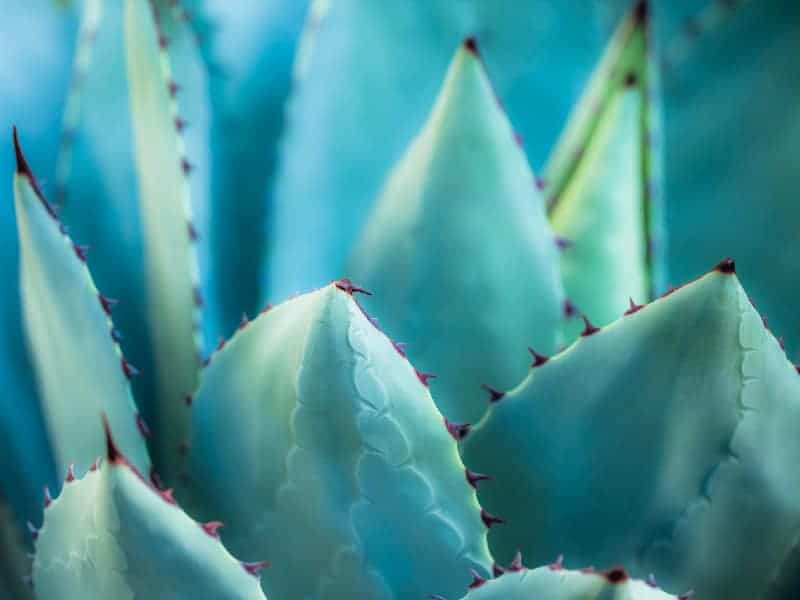
Agave isthmensis are rarely grown from seeds. For this reason, it can be incredibly difficult to find seeds to purchase. You can always collect seeds from your existing plants, but you may find yourself waiting years before your Agave blooms.
Furthermore, the success rate of growing succulents from seeds is not the same as propagation via offsets. Offsets aren’t typically removed until they’re large enough to be safely transplanted, so the chances of success are much higher than with the uncertainty of growing from seeds.
However, if you’re committed to this propagation method and have been able to locate and buy A. isthmensis seeds, you’ll need a shallow seed tray that can be covered. Fill the seed tray with the same well-draining soil you’d use with mature plants.
You’ll need to keep the soil moist, but not overly wet. Overly wet soil will cause the seeds to rot, so you might consider misting the soil rather than watering. Misting will also help prevent seed displacement.
To sow the seeds, simply sprinkle them across the surface of the soil. You can sprinkle a thin layer of soil over the top, but this isn’t necessary, and you don’t want to bury the seeds too deep.
To help preserve moisture, you’ll want to cover your seed tray with a plastic cover or wrap. Maintain these conditions for as long as it takes to see tiny Agave seedlings sprout from the soil, typically a few weeks.
Keep the seed tray in an area with bright, indirect light. A bright window just out of reach of direct sunlight is ideal.
Not all seeds will germinate, so once most of them have sprouted, you can remove the cover and let the soil dry out a bit. It will be some time before your Agave isthmensis seedlings will be able to be transplanted, so patience is key.
When your Dwarf Butterfly Agave is large enough to be moved to their own pot, you can treat them just as you would a mature specimen.


